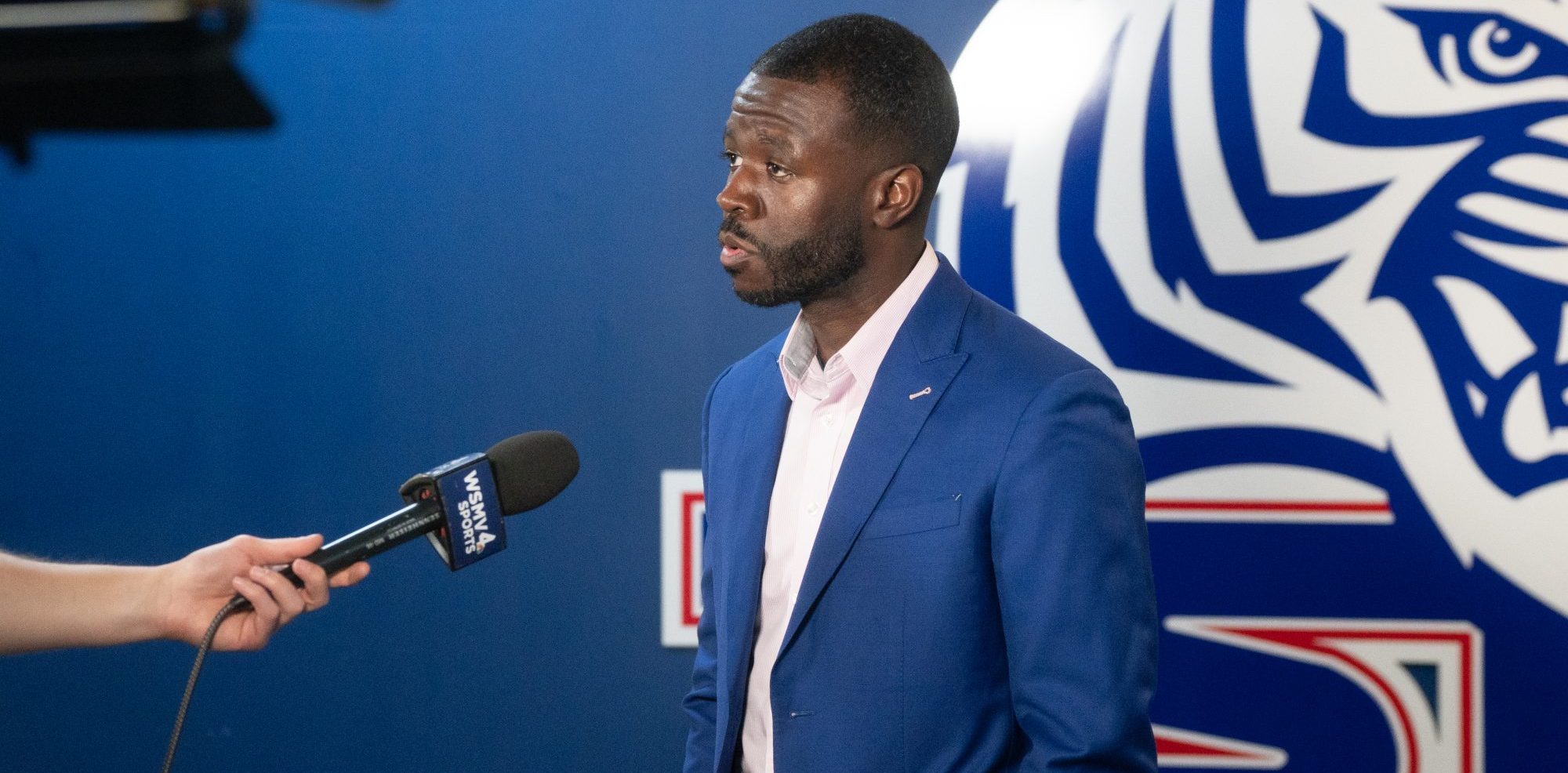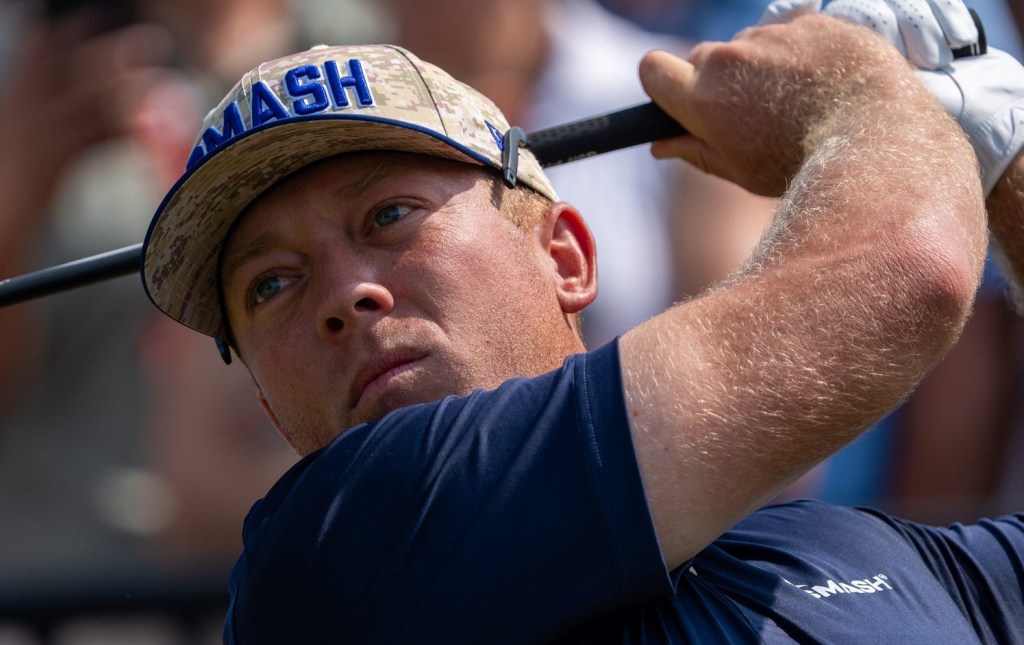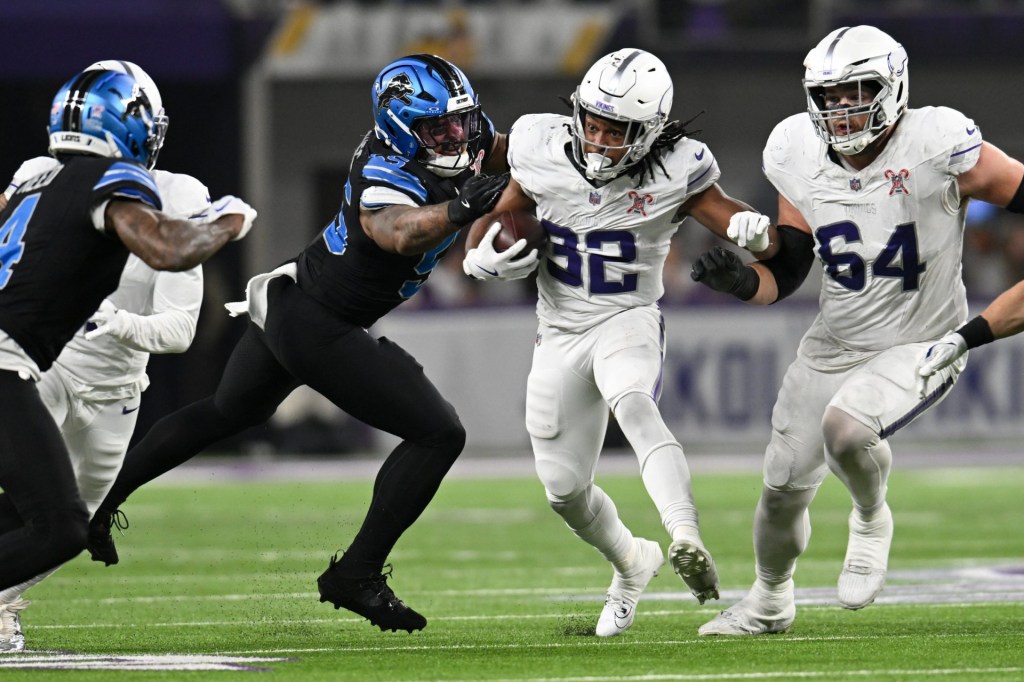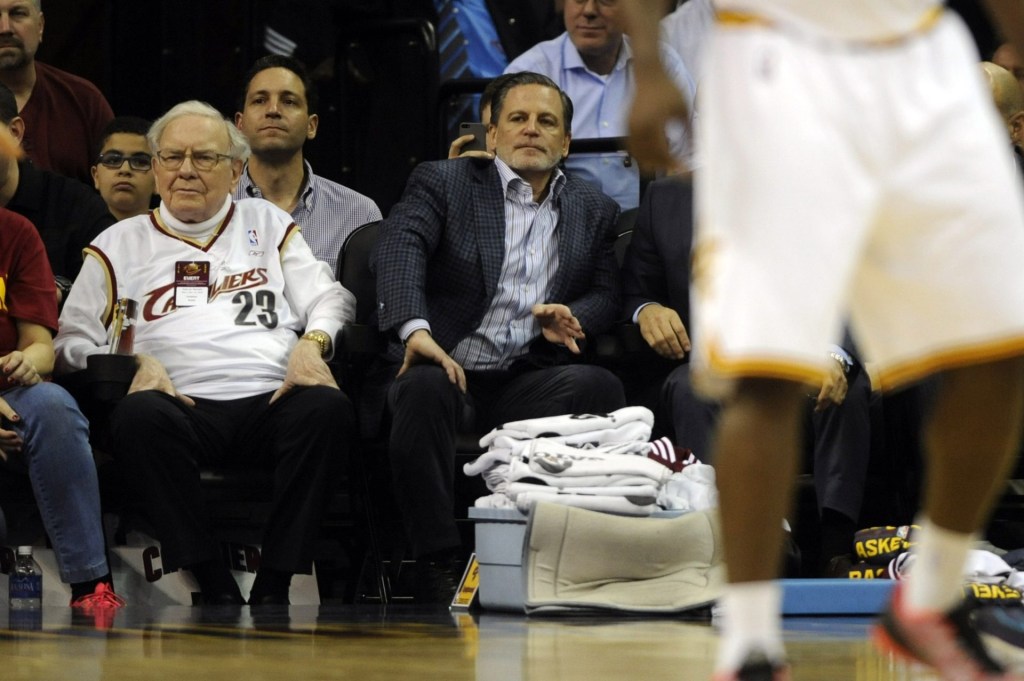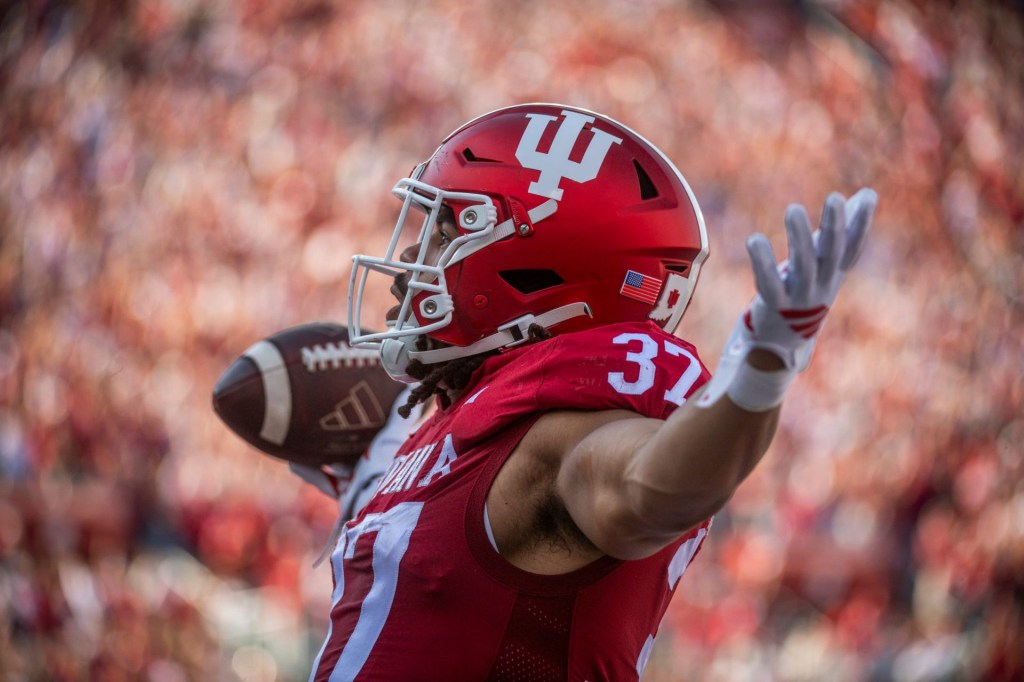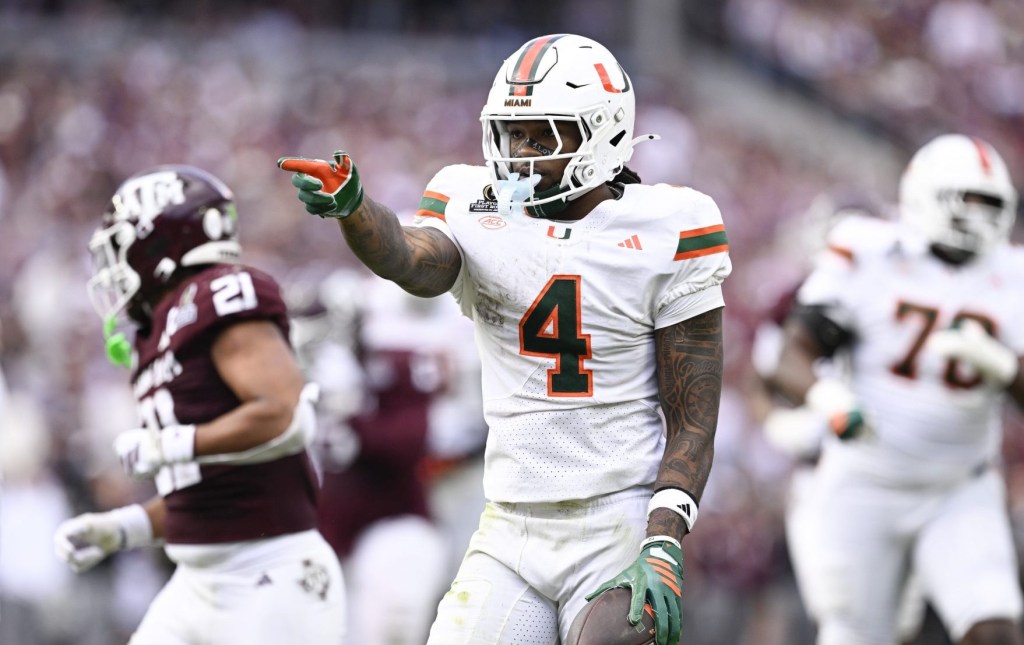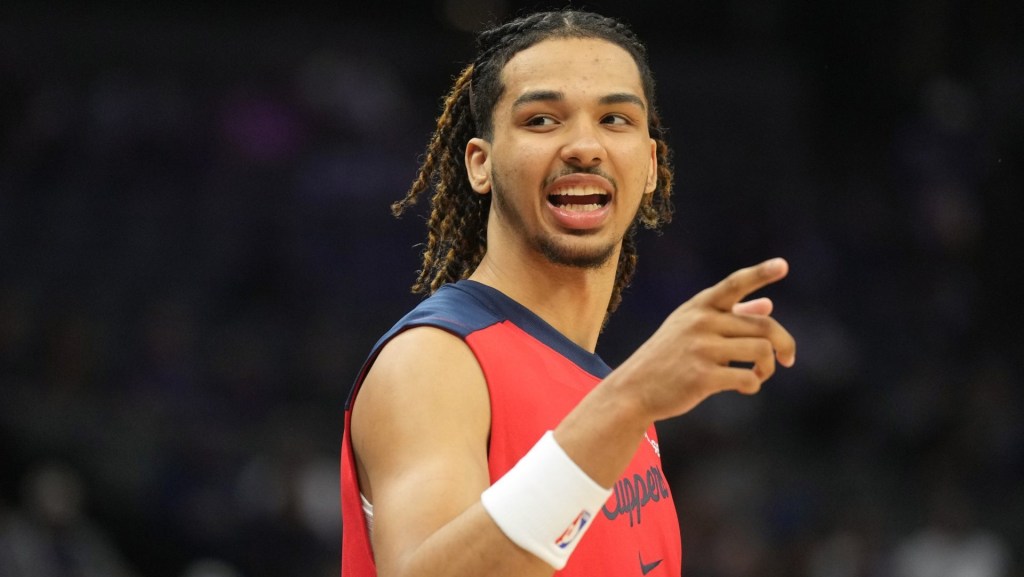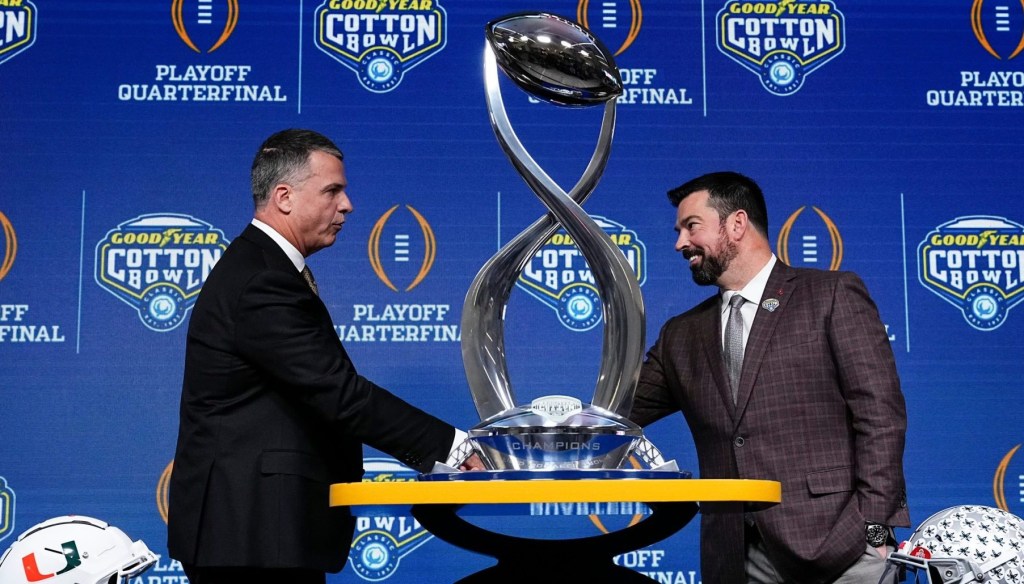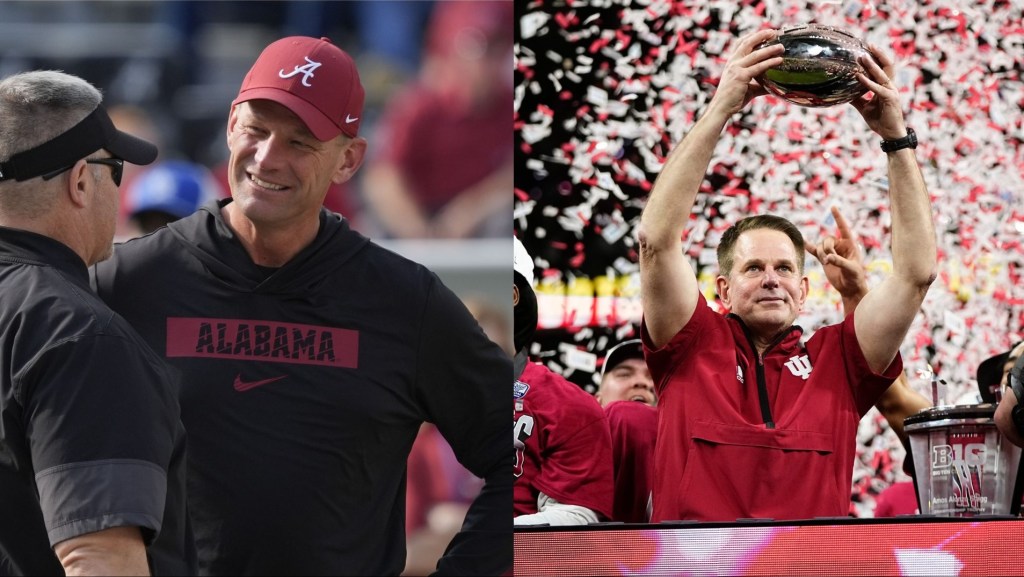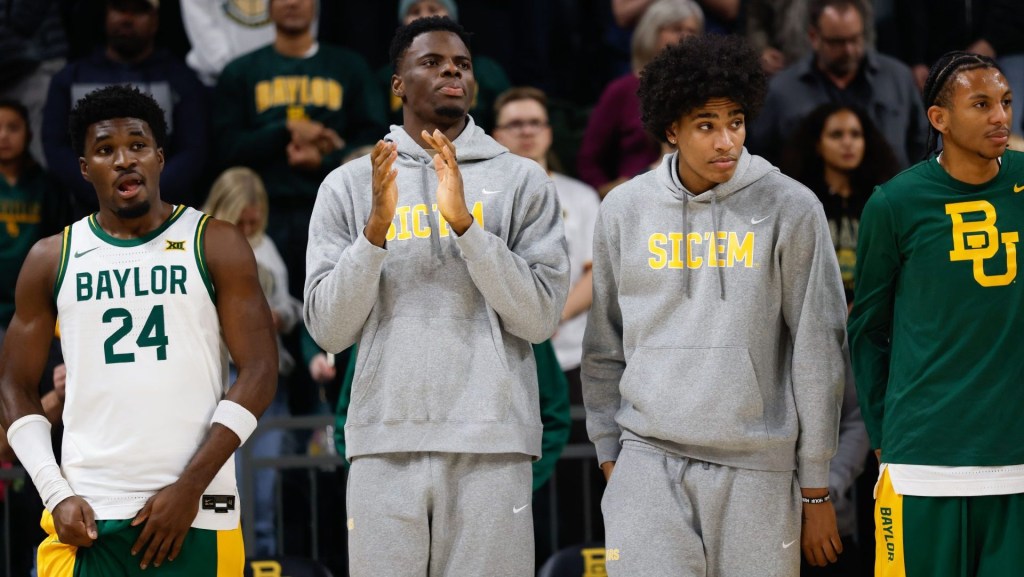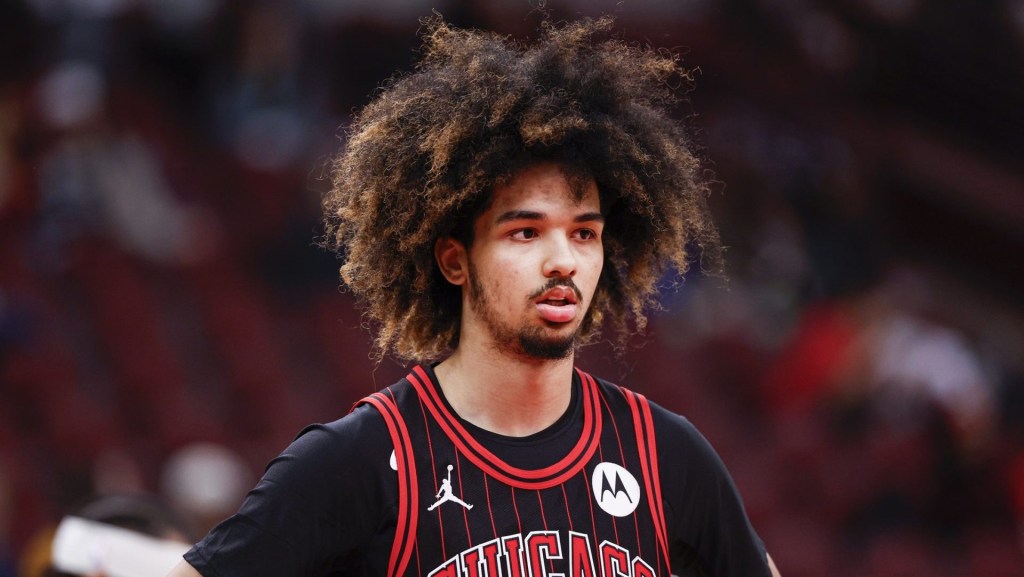On a Thursday morning in mid-September, Duanté Abercrombie sits in his car in a suburban Pittsburgh parking lot outside an ice rink. He’s fresh off a nearly nine-hour drive from his home in Nashville with a week-old baby at home, arriving for a recruiting trip to USHL’s 2024 Fall Classic. Once he’s off the phone, he’ll scout players from the junior hockey ranks for Tennessee State University’s program.
In many ways, Abercrombie is just like any of the other 64 head coaches of NCAA Division I men’s ice hockey teams: He hits the road to court prospects and spends hundreds of hours watching game film from potential recruits across the world; he works with athletic department administrators to ink equipment deals, plus makes sure the schedule is full and money is flowing in.
But Abercrombie, 37, is also the first Black male coach to lead a D-I team, and the only full-time ice hockey hire in the history of any historically black college and university. In June 2023, TSU became the inaugural HBCU to announce a program, which it plans to begin in the 2025–2026 season. Abercrombie, who served on the coaching staff within the Maple Leafs organization at the NHL, AHL, and ECHL levels—and goes by @blkhockey on social media—was named skipper of the Tigers in April 2024.
Abercrombie is ambitiously building a brand-new team at a breakneck pace (it has come together in a shockingly lean 16 months, “quicker than maybe the school was even prepared for,” he tells Front Office Sports). Yet it’s happening while TSU is running operations on a shoestring—one that’s gotten only more taut.
The university is in the throes of a financial emergency of budget mismanagement that threatens not only the school’s athletics but also its very existence. As headlines fly and there’s no resolution on the horizon, Abercrombie and the university are still grinding. They see no other option.
Kevin Westgarth was wrapping up a call when he received one of the most “serendipitous” messages of his career. “We got an email from the Preds on behalf of [TSU athletic director] Dr. Allen, and thought it was just too good to be true,” says Westgarth, a former Stanley Cup–winning forward and the NHL’s VP of hockey development and strategic collaboration. The meeting he had just finished: Developing a plan to add more club and varsity teams at untraditional schools.
Exploratory conversations kicked off in 2020 among the NHL, then TSU president Glenda Glover, and Predators CEO Sean Henry. But they quickly became concrete.
With funding from the NHL Industry Growth Fund, a venture arm of the league overseen by both NHL owners and NHL Players’ Association members, the first feasibility study for men’s and women’s hockey was born. (Nick Guerriero, TSU’s assistant athletic director for communications and creative, says the plan from the start was to begin with men’s hockey, followed by a women’s program.) TSU also partnered with MKurtz Consulting and nonprofit College Hockey Inc.

The document, reviewed by FOS, was released internally in October 2021, then updated with a pro forma to reflect new figures for the coming three to five years. Guerriero says the annual number to run the program is in the seven figures, and that estimate is still a moving target. Costs will likely go 5% to 7% higher than initially mapped, says Guerriero, who receives a stipend for his work on the hockey program. Abercrombie’s salary is currently the only one fully covered by the university.
The Predators will provide the building blocks. The team’s CMO, Bill Wickett, tells FOS that the Preds will help TSU establish home ice in one of the Ford Ice Centers it operates, one of which it uses as a practice facility. He adds all parties are still in talks about facility use and ice time as well as the fees associated with each. TSU hopes to build its own rink, but Guerriero says it’s not on the near horizon. There’s still too much to figure out and too much else to pay for.
The feasibility study notes several initial challenges to get hockey to take root, including the cost of that varsity-level competitive facility and its subsequent expenses, plus the necessary adjustment of “already challenging athletic funding levels” with the addition of a new D-I sport. Travel, too, will be an especially behemoth cost, with the majority of NCAA hockey programs concentrated in the U.S. North and Midwest.
The struggle to address these concerns will almost certainly get harder. In late September, TSU announced it was facing a “financial crisis” after it mismanaged budgets, putting it into a structural deficit by overspending throughout the past several years. As a result, the school has announced a slate of austere measures, including hiring and salary freezes as well as scaled-back spending in several categories of expenses.
No one, including TSU’s own staff, knows what these cost-cutting measures will be, and the athletic department is going through a quiet existential crisis that the staff largely needs to ignore each day they come to work. Dusty Bennett, TSU’s executive associate athletic director, says AD Mikki Allen has instructed the staff to do business as usual.
“Everyone is operating as normal. We’re just doing our day-to-day like we’re supposed to,” says Guerriero. “It’s just in God’s hands, essentially. The university has to do what’s best for them, not what’s best for us. It’s a business. Sports is a business.”
Even if Tigers hockey goes forward as planned, Guerriero says there is currently no timeline for when TSU anticipates it’ll break even on its investment, which he estimates to be close to $2.5 million in the first year. “We don’t even own pucks right now,” he says.
The school’s goal is to eventually operate the sport in the black, with the usual revenue from sources including ticket sales, media deals, and corporate sponsorship. It’s one of the main reasons why TSU decided to introduce hockey versus funneling investment into one of its existing seven men’s D-I teams, including revenue-generating sports football and basketball, which play in the Ohio Valley Conference.
Still, the announcement, made at Nashville’s Bridgestone Arena ahead of the 2023 NHL draft, landed with both praise and shock. “Not many people at HBCUs are in the hockey mindset. When it was announced, I think the situation was, what are we doing? Why are we not adding traditional sports? Some people kind of sit there and go, O.K., we’re adding new stuff, but we’re not taking care of what’s already in the house,” Guerriero says.
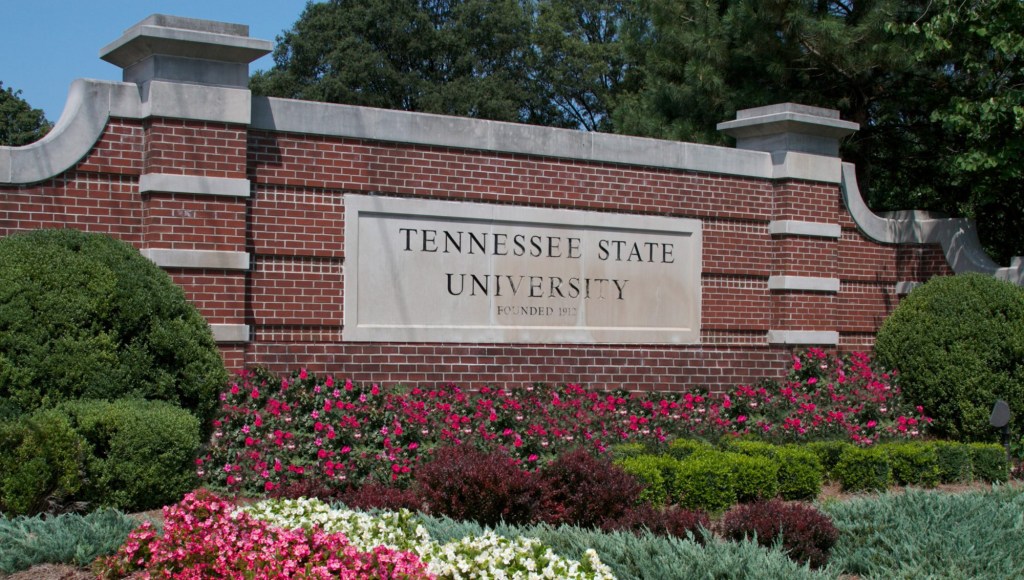
TSU currently operates its athletic department at a $0 deficit; none of its sports are funded 100% from the university, which means private donations play a massive role in bridging cash-flow gaps. “It could be a 60–40 split where coaches and our development office are required to go out and get funding, but also from sponsorship dollars,” Guerriero says. This may especially be the case going forward if budget cuts land.
The immensely expensive sport of hockey will be no exception to the athletic department’s setup. It, too, will be propped up by outside capital. TSU doesn’t yet know how much or what proportion of funding they’ll need, especially with finances in flux. And there are no major benefactors yet.
Instead, the first wave of money is flowing into the program mostly through small, private donations in a model reminiscent of a GoFundMe: $20 here, $30 there. TSU has been trying to reach would-be donors via social media since its announcement in 2023. Still in the most nascent stages, it hasn’t raised much through its portal; Abercrombie tells FOS they have pulled in about $8,000 via “grassroots mom-and-pop friends of the program,” some of whom are anonymous.
“A lot of it has been word of mouth,” he adds. “My goal with the entire program is we have to have good bones first. We have to make sure that we look and operate a certain way, and that the conversations are being had with individuals that when we are prepared to activate and move financially, those individuals are ready to move.”
While there is still daylight between where the university is and where it wants to be, the Tigers are necessarily adapting. Recruiting, which is entirely privately funded this year, is an example of where it is hoping to build a robust war chest. The school is particularly targeting players from diverse cities, including Detroit, Toronto, and the D.C. metro area. For the in-person USHL Fall Classic trip, Abercrombie has dipped into his own pocket. But he says much of his recruiting currently happens virtually after watching hours upon hours of game film.
“If I don’t have the funding right now because the institution is fixing the finances to make sure that we have the proper funding in the right way going forward, then I get on the phone, I call, I get on video platforms, and I watch these athletes,” he adds.
For their inaugural season, the Tigers will not have a full 18 athletic scholarships, but they will try to subsidize recruits through financial aid packages and academic awards as they work their way to a complete slate. They aim to raise an endowment to fund all 18 roster spots at the Year 5 mark.
Abercrombie says NIL (name, image, and likeness) will come into play in the future, too, especially as the recruiting pipeline becomes more robust. The feasibility study notes the Predators plan to help athletes “explore opportunities.” (In general, NIL at TSU is in very early stages of development across all sports, according to Jeff Martin of SANIL, who works with the school’s collective, Heart Of A Tiger.)
Despite fragile finances, TSU hockey does not plan to start gingerly.
When the initial feasibility study was conducted, the Tigers were slated to play as a club team for its first season. But Abercrombie changed the team’s trajectory to begin competition at the highest level out the gate, with his eyes on a trophy.
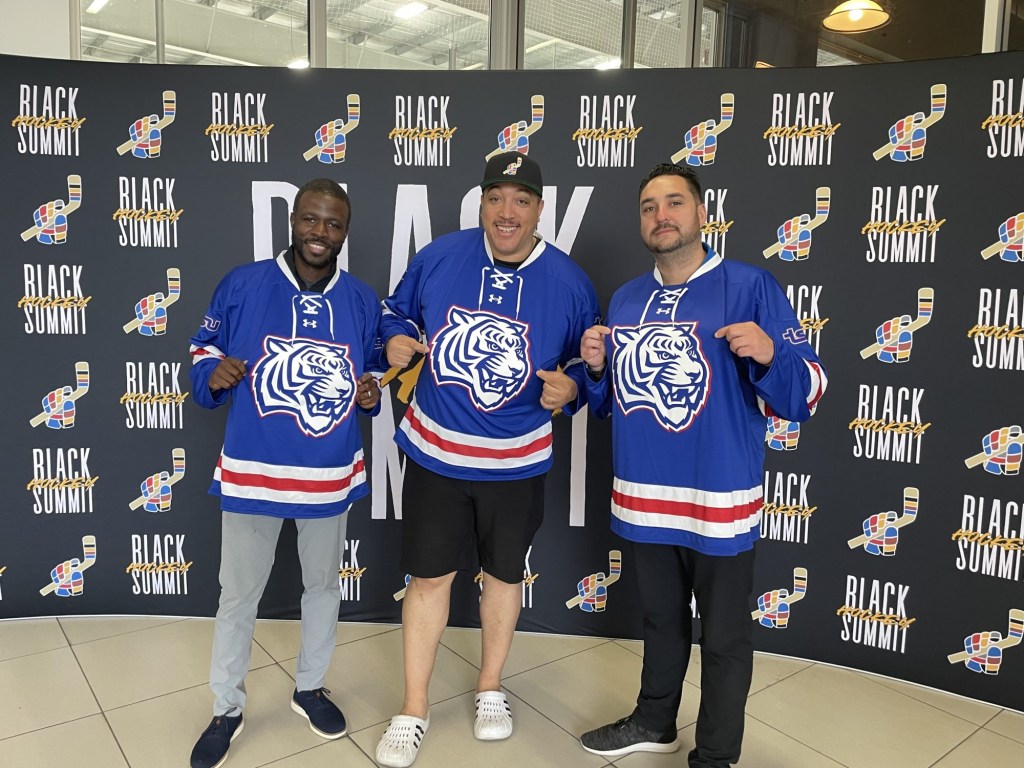
It’s not out of the realm of possibility that an upstart like TSU could win a national championship at some point. “Hockey is a sport where the biggest brands don’t always win championships. It’s a sport where you don’t need to be the bluest of the bluebloods to compete nationally,” says Sean Hogan, College Hockey Inc.’s executive director. The NHL’s Westgarth agrees.
Accordingly, the Tigers, who will play as an independent school for the foreseeable future, have already begun work on building 20-team schedules through 2026–2027. They are not shying away from some of the toughest D-I opponents, currently finalizing contracts with teams from top conferences such as the Big Ten and the Midwest’s NCHC, which includes 2024 champion and all-time winningest NCAA program Denver.
“It’s a huge credit to them for having that confidence and going out into the market in that way. [Being] independent is something they’ll have to navigate, but they’re not doing it alone, and they’re not doing it without the support of teams that are in established conferences,” says Brian Smith, associate commissioner of Hockey East, a powerhouse group that includes Boston College, Boston University, and UMass.
Abercrombie says TSU has approached teams in Hockey East and is working on scheduling agreements, which Smith adds also helps the conference’s programs meet their 10 non-conference-game requirement. TSU hopes it will solidify its schedule by January 2025, at which point it will also plan its season-ticketing campaign. If all goes to plan, the puck will drop for its first D-I game in October.
Whether it wants to, TSU is waving the flag for representation in a sport that’s been historically white, affluent, and Northern. (Two of TSU’s first recruits are from Minnesota and Montreal.) The NHL tells FOS that its youth programs are recording increasingly diverse participation in both the U.S. and Canada. However, hockey is still widely homogeneous, in large part due to the high financial bar to entry and geographically limited development opportunities.
Abercrombie argues the NHL has consistently proved the sport can work in the South, pointing to the neighboring Predators, Lightning, and reigning Stanley Cup champion Panthers. TSU, he believes, represents just one step on a larger path toward building out a hockey stronghold in the region.
But it also needs to break through a cultural brick wall. The NHL tells FOS it does not officially collect data on BIPOC players, but even for a casual viewer, the ranks of diverse players are noticeably thin. And within both junior and pro locker rooms, some of these players have noted issues including isolation and racism.

The league is aware there’s room to improve. Its “Hockey Is For Everyone” initiative aims to encourage growth across traditionally underrepresented groups both on and off the ice, including BIPOC, LGBTQ, and Deaf communities. The project is not without its critics, but the NHL has made several strides, including introducing inclusion initiatives for both players and coaches. The sport reached a milestone in July with the Kraken’s hire of the league’s first female assistant coach, Jessica Campbell.
Diverse players are also increasingly making NHL rosters. And their stars are rising: The 2024 NHL draft was the most diverse class in history. For the fourth pick, the Blue Jackets selected 18-year-old center Cayden Lindstrom from British Columbia, who is Black and Indigenous.
“There’s a little Duanté sitting there somewhere who would love to play ice hockey and all their friends are telling them, ‘Hey, that’s not a Black person sport.’ But now they can point and say Tennessee State University is playing hockey not only at the collegiate level, but at the NCAA level and is fighting for a national championship,” he says.
Since TSU announced hockey, Hogan adds College Hockey Inc. has heard whispers of other HBCUs considering adding D-I hockey. Although he stresses there are no known concrete plans or feasibility studies in action, he believes TSU has opened the floodgates for change. “As much as this is for TSU, it’s a community-based thing. It’s like, ‘Hey, we can do this, let’s get all into the environment. Let’s all stand up a program. This can be done. Let’s talk about it.’”
“I want everybody in 10 years to look back and say, ‘You know what? That made all the sense in the world,’” Abercrombie says. “Hockey at an HBCU makes all the sense in the world.”
But it’ll have to come together as administrators make critical decisions. The staff is just waiting out the period of turmoil. “On any day, anything can happen,” says Guerriero. “It’s the greatest story to be told, or the greatest story never told.”
